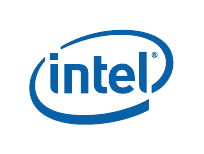
Intel
®
IXP42X product line and IXC1100 control plane processors—UTOPIA Level-2
Intel
®
IXP42X Product Line of Network Processors and IXC1100 Control Plane Processor
DM September 2006
544 Order Number: 252480-006US
control plane processors by driving their UTP_IP_FCI (also known as RX_EMPTY_N/
RX_CLAV) signal, to inform the UTOPIA Level-2 Interface that the physical interface is
ready to send a cell.
The Receive Port Status (RXPORTSTAT) register, contained within the Receive Module,
stores the polling result for each of the physical interfaces. The UTOPIA Level-2
hardware uses the values — stored in the Receive Port Status (RXPORTSTAT) Register
— to determine the physical interface the received cell originated from. The Receive
Module will store the received cell along with the physical interface address that the cell
was received from into the Receive FIFO with some basic filtering capability if desired.
The Network Processor Engine will then read the address from which the cell originated
and then the cell.
The Receive Module performs an optional, cell-level filtering that may cause a cell to be
discarded prior to being placed into the Receive FIFO. Some of these features can be
enabled or disabled include:
• Received cells that are too short are discarded
• Excess bytes of received cells that are too long are discard
• Detection of HEC errors in the cell header causes the cell to be discarded (Can be
enabled/disabled)
• Detection of idle cells will be discarded (Can be enabled/disabled. The definition of
an idle cell is programmable by setting the appropriate values in the Receive Define
Idle [RxDefineIdle] registers)
As the Receive Module is placing data into the Receive FIFO, the header information is
being passed to the Receive Pre-Hash Unit.
The UTOPIA Coprocessor Receive Pre-Hash Module provides a mechanism for allowing
incoming UTOPIA cells to have the ATM header looked up in a hash table to achieve
faster address recognition. The hash unit takes the incoming ATM header, combines it
with the arriving port information, and produces a header that can be read by the
Network Processor Engine core. The Receive Pre-Hash Function can be enabled or
disabled and can be used in single-PHY or multiple-PHY modes of operation. When used
in single-PHY mode of operation, the port address will always be zero.
Figure 99 shows the reception of a cell in multiple-PHY (MPHY) mode. The following
assumptions are made for the figure:
• There are eight active physical interfaces connected named A through H which map
to logical address 0 through 7.
• Physical Interface A is the currently selected physical interface for clock cycles 0
through18.
• Notice on clock 7 that the result from Physical Interface G is that Physical Interface
G has a full cell ready for the IXP42X product line and IXC1100 control plane
processors. The UTP_RX_FCI signal flags that a full cell is ready to be sent by
Physical Interface G to the IXP42X product line and IXC1100 control plane
processors, asserting the UTP_RX_FCI to logic 1 one clock after Physical Interface
G has been polled.
• On clock 16, the final Physical Interface polled is the Physical Interface that is
currently selected. This polling is irrelevant to the Physical Interface that was polled
previously prior to this location.
• Notice on clock cycles 18 and 19 that Physical Interface G is selected as the next
Physical Interface that the IXP42X product line and IXC1100 control plane
processors will receive data from that Physical Interface.


















